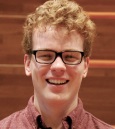 |
Adam Officer is currently a Research Associate at the Broad Institute of MIT and Harvard in the Proteomics Platform working under Dr. Jacob Jaffe. His research is based around the Library of Integrated Network-Based Cellular Signatures Program and aims to apply high-throughput proteomics to create a database of targeted proteomics signatures to ask questions that deepen our understanding of disease biology and inform clinical treatments. Read More
He completed his BS in Chemistry and Biochemistry at the University of Washington while performing research on protein engineering for synthetic biology applications at Arzeda Corporation.
Skyline Metadata Annotation and Automation of Robust Data Processing via Panorama Allows for Facile Analysis of High Throughput Targeted Proteomics DataDissemination of targeted proteomics data via Skyline has recently been bolstered by the introduction of Panorama as a ready to use web sharing portal. However, there are still several challenges faced by end-users: discovery and reusability of these data is hampered by inconsistent or incomplete metadata annotation, a lack of reproducible data processing pipelines lead to errant findings, and a dearth of visualization tools further raises the barrier to consuming data. Under the auspices of the Library of Integrated Network-Based Cellular Signatures (LINCS) Program we have developed a workflow that utilizes Skyline, Panorama, and online visualization tools to address these three issues. Firstly, we attach standards-based, human-readable Skyline metadata annotations that fully describe our diverse biological samples. Upon publication to Panorama our scripts hosted on the LabKey server read embedded metadata processing parameters from each file and execute our pipeline resulting in reproducibly analyzed data in a standardized format. Deeper analysis and interactivity occurs through a direct data transfer from the Panorama portal into the web-based visualization software Morpheus. Currently our LINCS repository contains over 4000 samples and has a user community of >1500 unique visitors from all over the world. [PDF] |